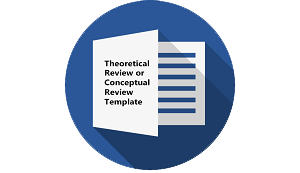Task-Based Learning in the Classroom for EFL Learners: A Review
DOI:
https://doi.org/10.30957/lingua.v17i2.641Keywords:
TBL, English Classroom, EFL LearnersAbstract
In language teaching and learning, there are several methodologies and approaches; one of them is TBL. Since the 1980s, this approach has had the most pedagogical attention in second language pedagogy. TBL is becoming increasingly common worldwide, particularly in English classes in Indonesia. The task's goal is to establish a clear reason for language use and create a natural meaning for language learning. The ideas and principles of TBL have proven to be effective in classrooms. This paper aims to explain why teachers should implement TBL (TBL) in the language classroom and how to implement TBL during classroom instruction. The discussion begins with the introduction and the description of TBL. Then, it goes on TBL characteristics and continues with the approaches, the benefits, and framework of TBL.
Downloads
References
Andon, N. (2010). Task- based L2 pedagogy from teacher’s point of view.TESOL-2010,Boston. Retrieved on June 25,2020, from www.slideshare.net/victorgaogao/on task based- learning-lesson-design.
Büyükkarci, K. (2009). A critical analysis of TBL. Kastamonu Journal of Education, 17(1), 313-320.
Dailey, A. (2009). Key Motivational Factors and How Teachers Can Encourage Motivation in their Students. MADissertation, University of Birmingham. Retrievedfrom http://www.birmingham.ac.uk/Documents/collegeartslaw/cels/essays/secondlanguage/DailySLAKeyMotivationalFactorsandHowTeachers. Pdf
Ellis, R. (2003). Task-based language teaching and learning. Oxford: Oxford University Press.
Ellis, R., Sheen, Y.(2006). Re-examining the role of recasts in SLA. Studies in Second Language Acquisition, 28, 575-600.
Ellis, R. (2009). Task-based language teaching: Sorting out the misunderstandings. International Journal of Applied Linguistics, 19(3), 221-246.
Gatbonton, E. and Segalowitz, N. (2005). Rethinking communicative language teaching: a focus on access to fluency', Canadian Modern Language Review, 61(3), 325-53.
Lin, Z. (2020). Task-based Approach in Foreign Language Teaching in China: A Seminar Paper Research Presented to the Graduate Faculty, University of Wisconsin-Platteville, 2009. Available online http://minds.wisconsin.edu/bitstream/handle/1793/34571 /Zhu,%20Lin.pdf.txt?sequence=3, accessed June 25, 2020.
Littlewood, W. T. (1999). Second language teaching methods. In B. Spolsky (ed.), Concise encyclopedia of educational linguistics. Amsterdam: Elsevier, 658–668.
Long, Michael H. 1985. Input and second language acquisition theory. In S. Gass and C.Madden (Eds.), Input and second language acquisition Rowley, Mass.: Newbury House, 377-393.
Long. M. (2000). Focus on form in task-based language teaching. In R. Lambert & E. Shohamy (Eds.), Language policy and pedagogy. Essays in honor of A. Ronald Walton, Philadelphia: John Benjamins, 179–192.
Newton, J.(2001). Options for vocabulary learning through communication tasks. ELT Journal, 55(1),30-37.
Nunan, D. (1989). Designing Tasks for the Communicative Classroom. Cambridge: Cambridge University Press.
Nunan, D. (2004). Task-based language teaching. Cambridge: Cambridge University Press.
Prabhu, N. S.(1987). Second Language Pedagogy. Oxford: Oxford University Press.
Richards, J. C. & Rodgers, T. S. (2001). Approaches and methods in language teaching (2nd ed.). Cambridge, UK: Cambridge University Press.
Ridder, I., Vangehuchten, L., & Gomez, M. (2007). Enhancing Automaticity through task-based language teaching. Applied Linguistics, 28 (2), 309-315.
Samuda, V., & Bygate, M. (2008). Tasks in second language learning. Basingstoke: Palgrave Macmillan.
Skehan, P. (1998). Task-based instruction. Annual Review of Applied Linguistics, 18, 268-86.
Supriyono, K. &Sugirin. (2014). Pengembangan media pembelajaran membaca Bahasa Inggris SMP berbasis web. Pengembangan Media Pembelajaran Membaca Bahasa, 1(1), 49 – 64.
Swan, M. (2005). Legislation by hypothesis: the case of task-based instruction. International journal of Applied Linguistics, 26(3), 376-401.
Willis, J. (1996). Framework for TBL. Harlow: Longman.
Downloads
Published
How to Cite
Issue
Section
License
Authors who publish with this journal agree to the following terms:
- Authors retain copyright and grant the journal right of first publication with the work simultaneously licensed under a Creative Commons Attribution-ShareAlike 4.0 International License that allows others to share the work with an acknowledgement of the work's authorship and initial publication in this journal.
- Authors are able to enter into separate, additional contractual arrangements for the non-exclusive distribution of the journal's published version of the work (e.g., post it to an institutional repository or publish it in a book), with an acknowledgement of its initial publication in this journal.
- Authors are permitted and encouraged to post their work online (e.g., in institutional repositories or on their website) prior to and during the submission process, as it can lead to productive exchanges, as well as earlier and greater citation of published work (See The Effect of Open Access).















